I hope you are enjoying these stories of Metonga as much as I enjoy writing them. I apologize for the brief break over the past two weeks, but somehow the Metonga stories ended up at the bottom of my to-do list. The good news is that the Metonga series was pushed to the bottom due to some other really important historical happenings in Forest County we’ve been working on! More about this soon – but until then, enjoy the photos below.
Our next stop in the “Lakeland Series” from March of 1887, is what the author of the newspaper column referred to as “Echo Bay”.
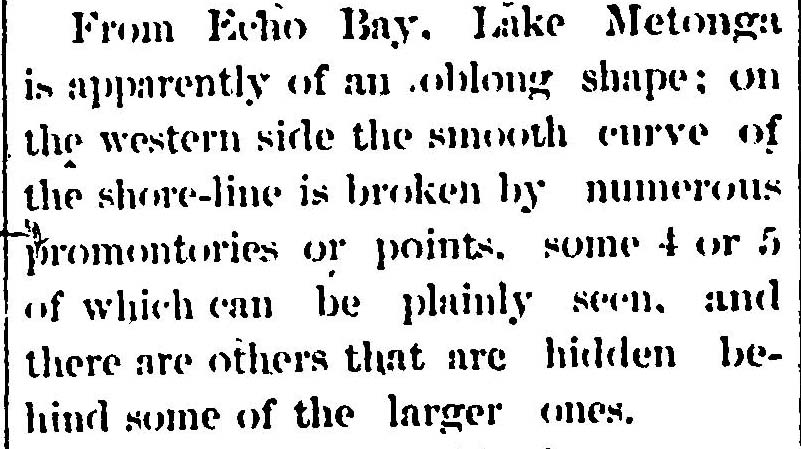
When I started this research project, I was bound and determined to find a map and/or another resources that positively identified the area known as Echo Bay. Unfortunately, I have not yet been able to find any other reference to “Echo Bay” in print. However, based on the newspaper article in its entirety, the area known as Echo Bay has been identified as the area we now commonly call Glen Park.
In fact, the area more than likely has been called Glen Park since shortly after this article was published in March of 1887. Glen Park, on the North Shore of Lake Metonga, was purchased by one of Crandon’s earliest pioneers, Sam Shaw and eventually platted in the Register of Deeds office as the Glen Park addition.
The history of Metonga and Samuel Shaw are intertwined so I feel its important to give you a brief description of what some refer to as the “father of Crandon”. Sam Shaw’s obituary, published on March 9, 1917, in the Forest Republican defined him as the “founder of our town” and states that “his faith in Forest county was unbounded and is justified by the gains he has made from his investment of early days”. The Antigo newspaper took a more conservative approach and pointed to not only Samuel Shaw’s friends but also his enemies. It’s important to point out that numerous Forest County debates, including the fate of our current courthouse and fairgrounds, are the direct result of Sam Shaw’s knowledge of property law.
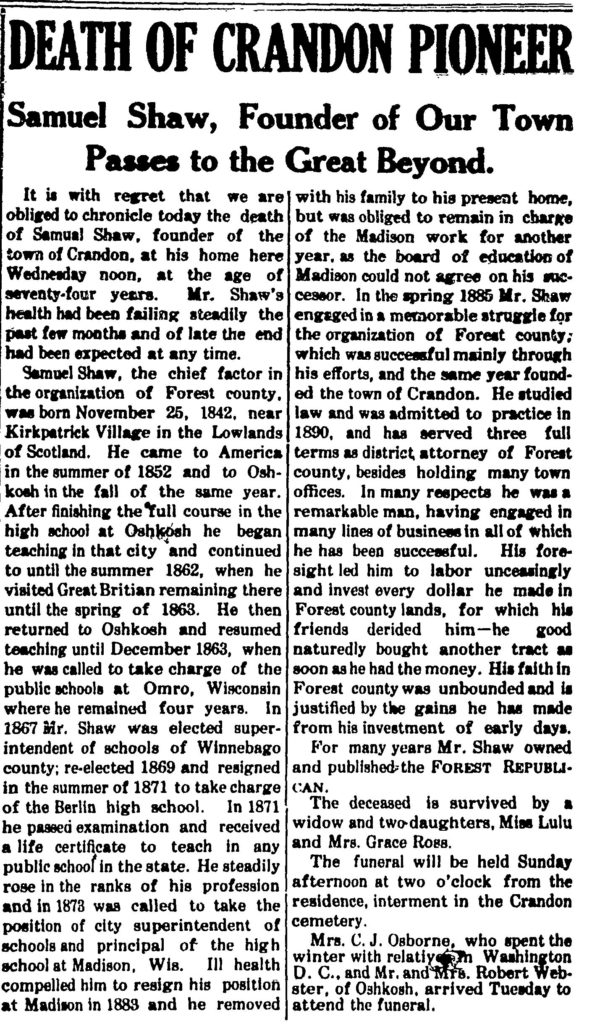
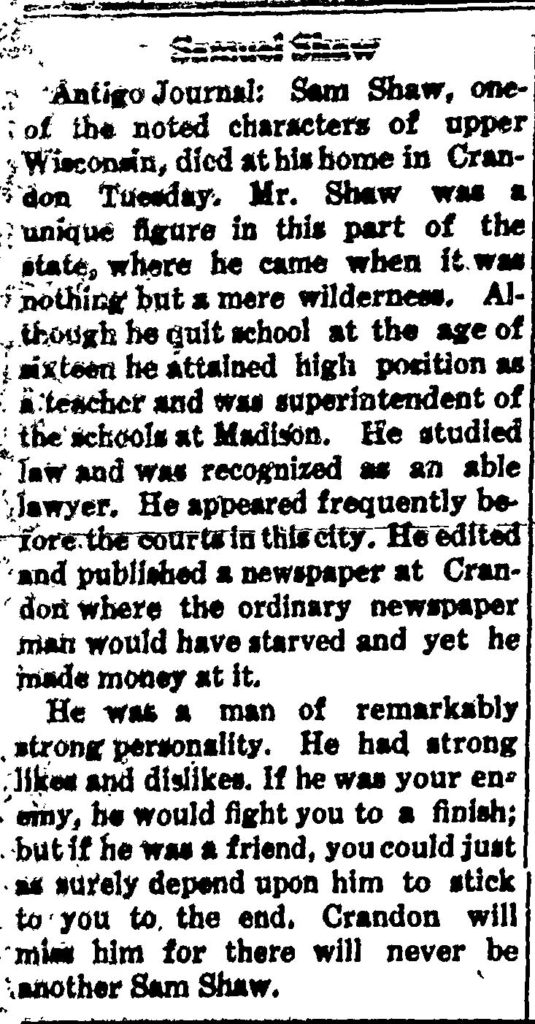
According to a April 1975, Forest Republican article Samuel Shaw’s first house in Crandon was a log building that stood on the same property on which his bigger house was built later. It is possible that these cabins, which eventually became part of the Lake Metonga Camp, were Shaw’s original log cabins.
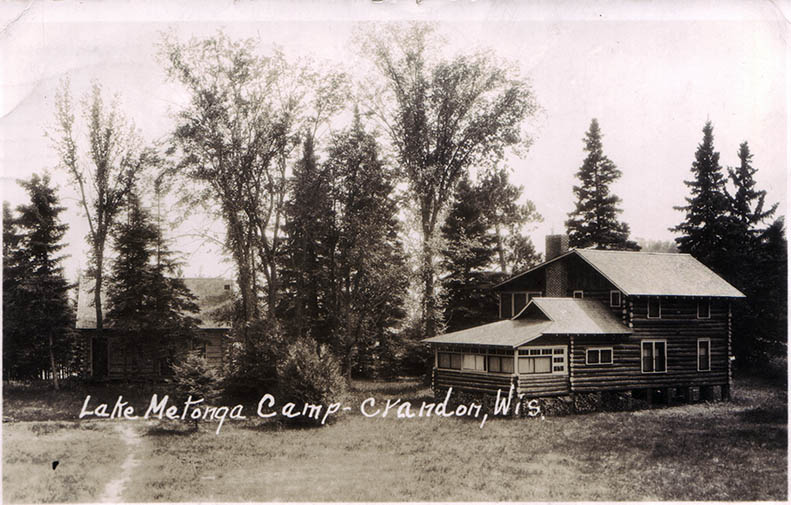
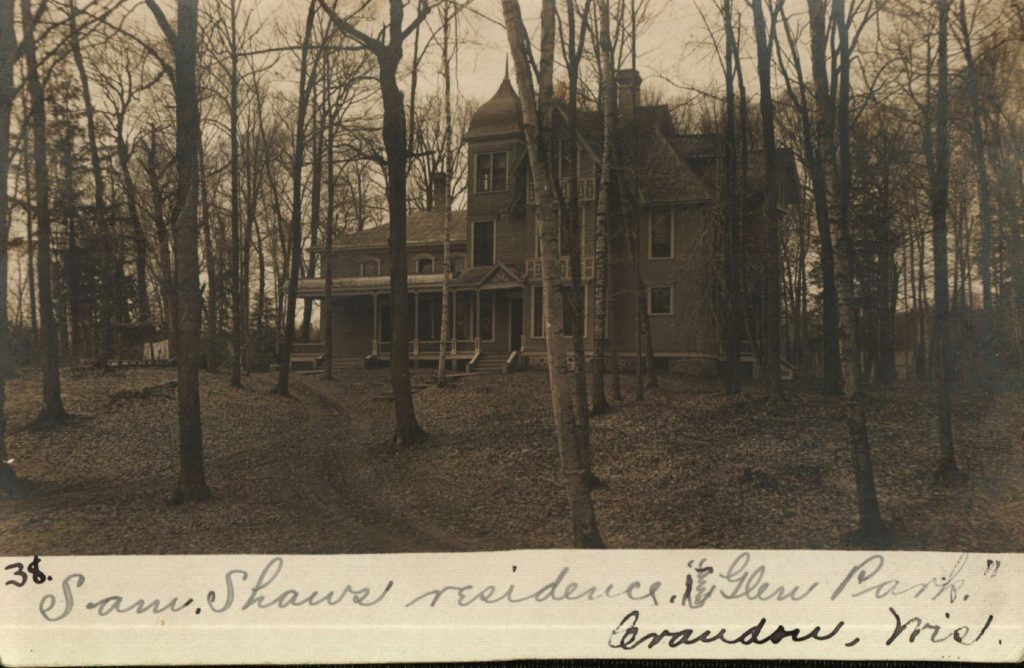
Samuel Shaw’s Glen Park, a a total of 170 acres of land and his residence, was sold to Dr. and Mrs. C.O. Decker in 1910 for $22,400. The Decker’s re-named the resort complex “Lake Metonga Camp” in 1922.
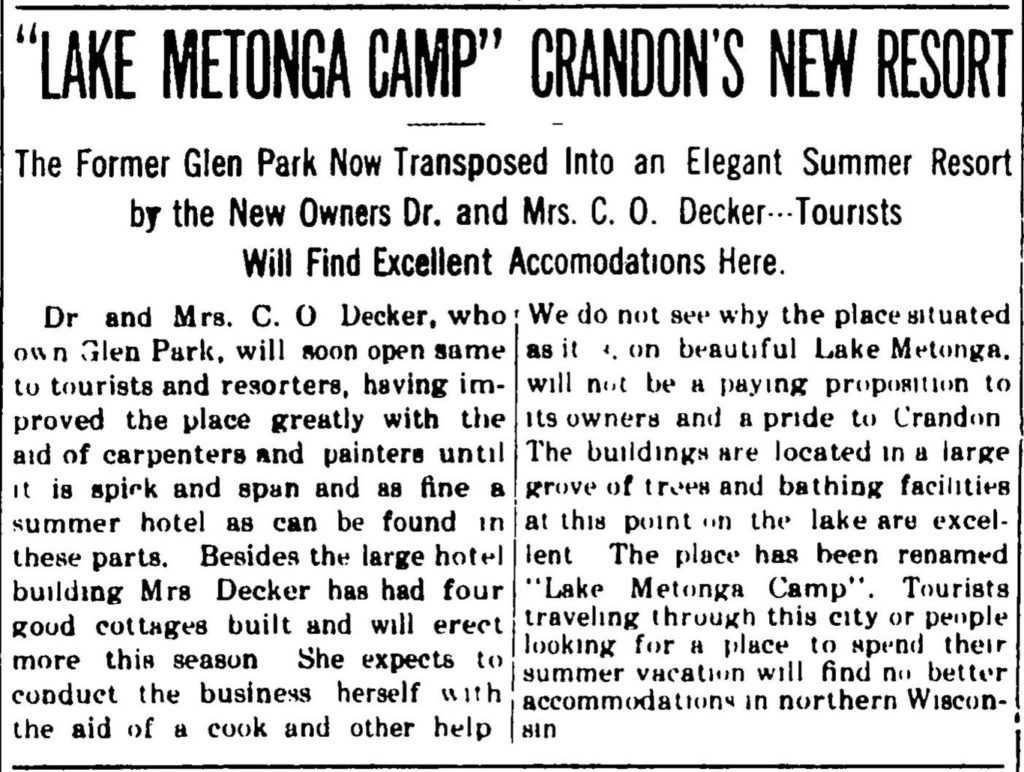
Numerous photos of Lake Metonga Camp exist in our collection.
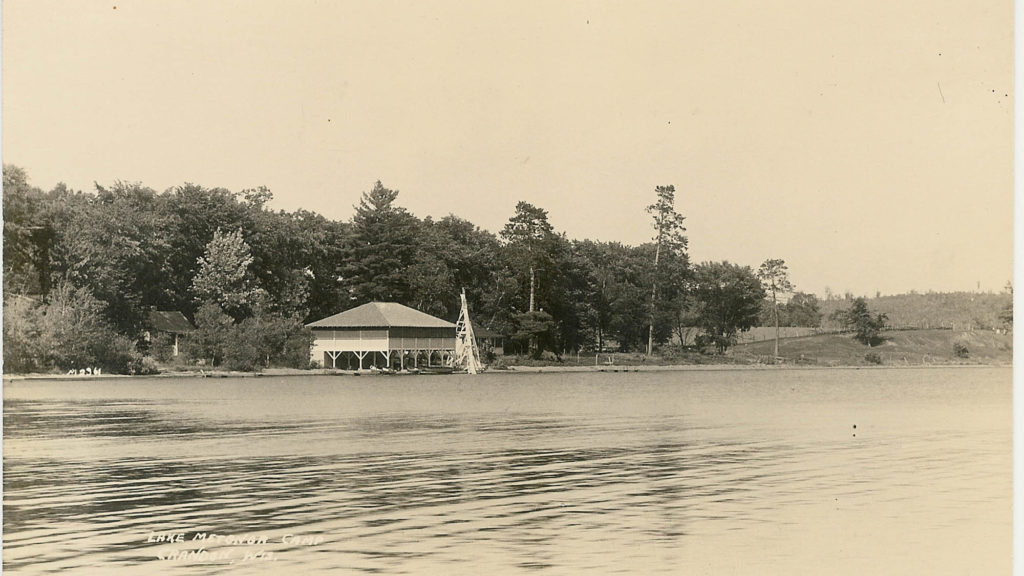
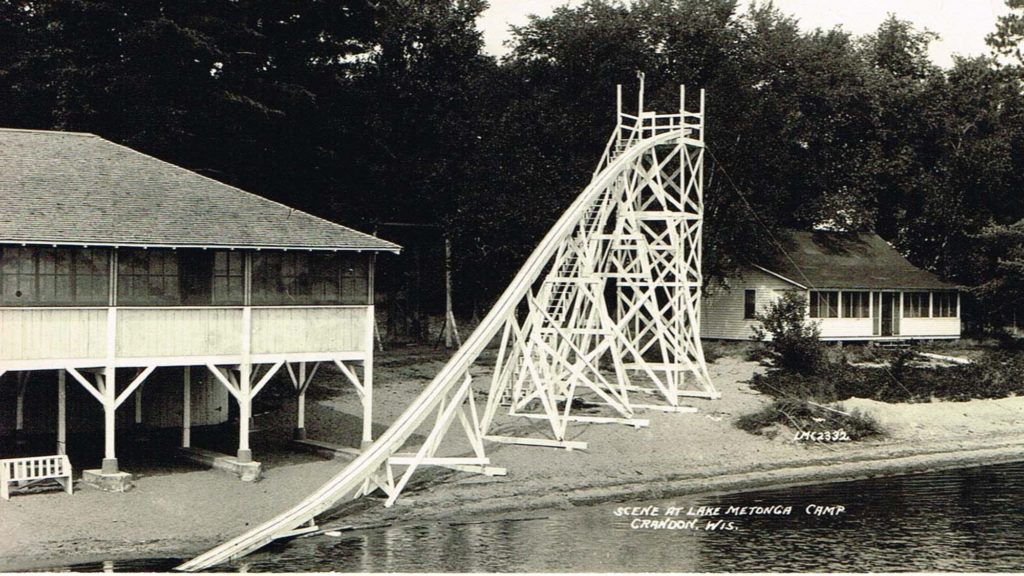
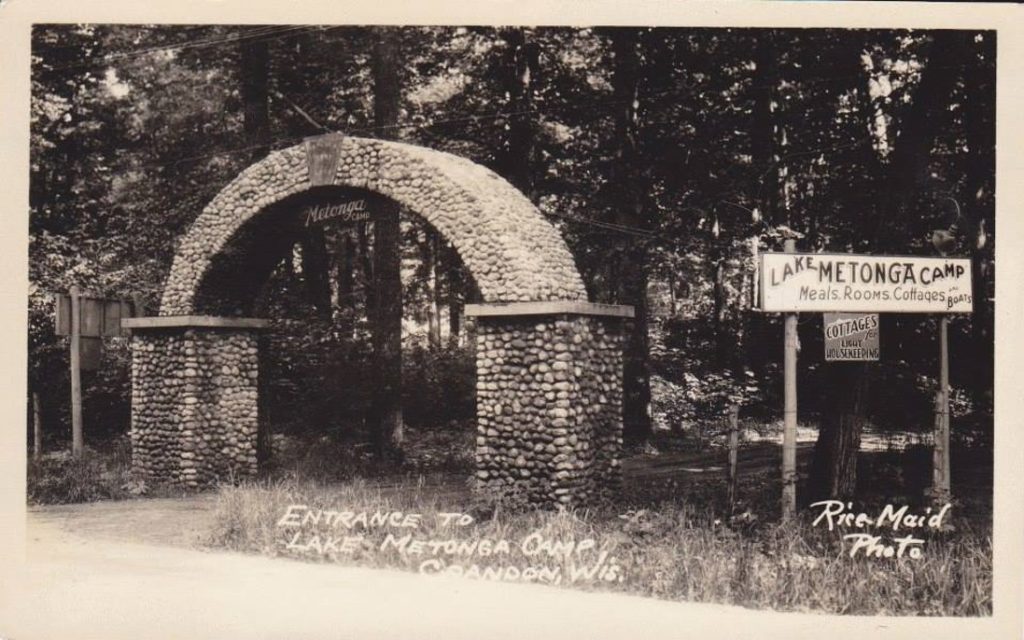
Dr. Decker passed away in 1934 and his
obituary lists the Lake Metonga Camp
as the largest resort in Forest county.
Mrs. Decker continued to operate the resort until 1941 when she sold it
to Mr. and Mrs. Harvey Ludwig who operated it as the Lake Metonga
Lodge.
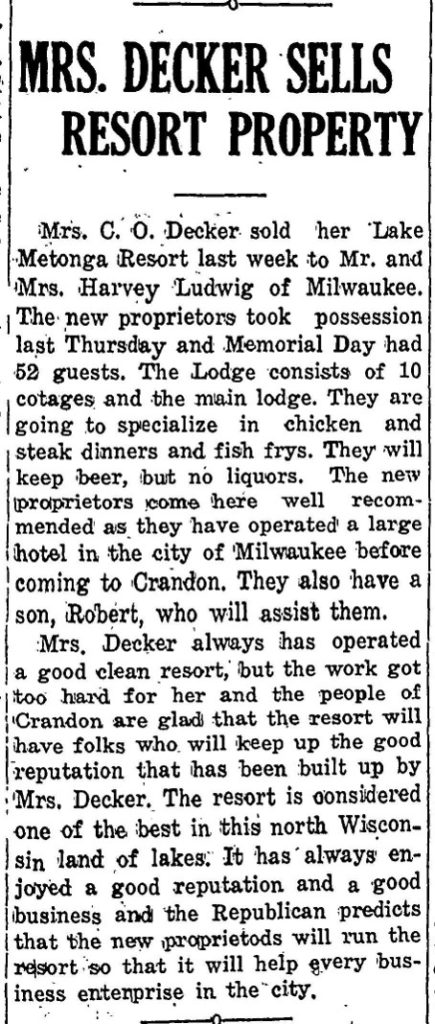
Lake Metonga Lodge changed hands again from the Ludwigs to a
partnership that included Rosa Ammer (who later owned the Crandon Arcade),
Archie Orlebeck and
Tony Paris, and then finally to the Keeler’s when it become Keeler’s Resort in
1946.

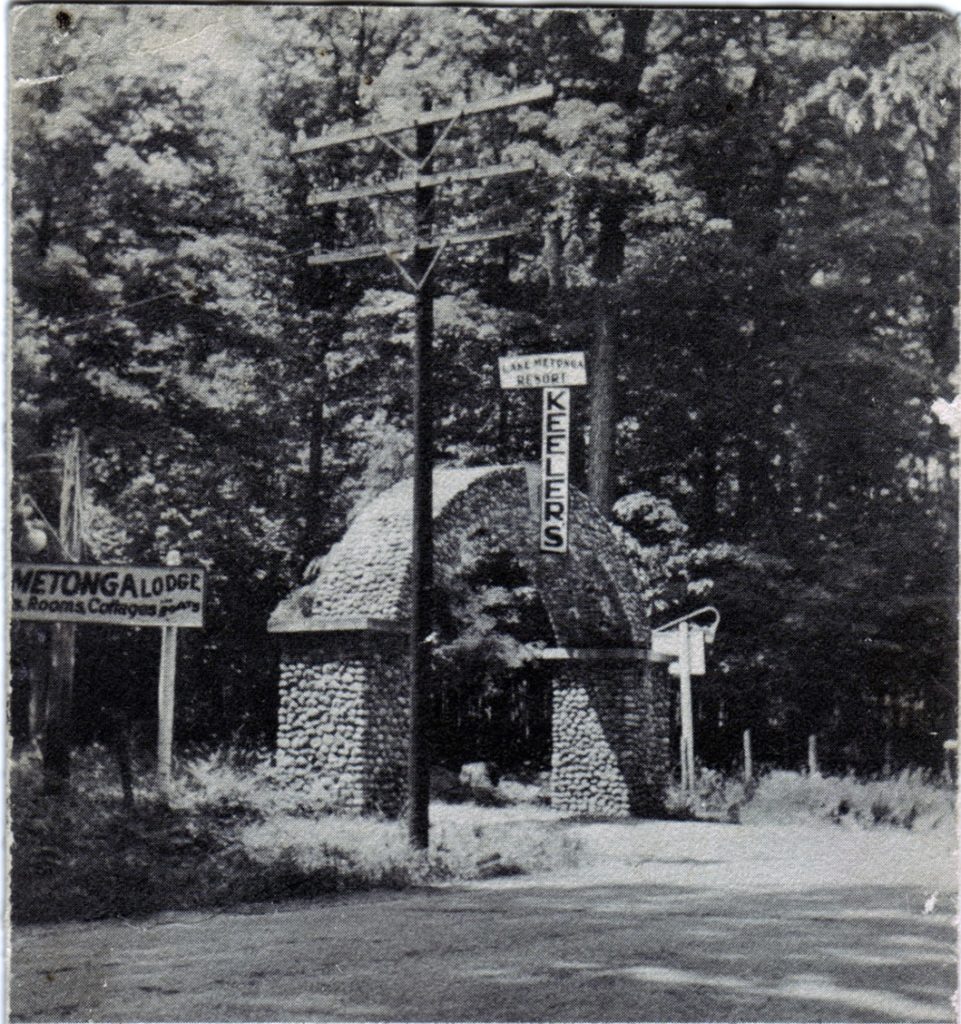
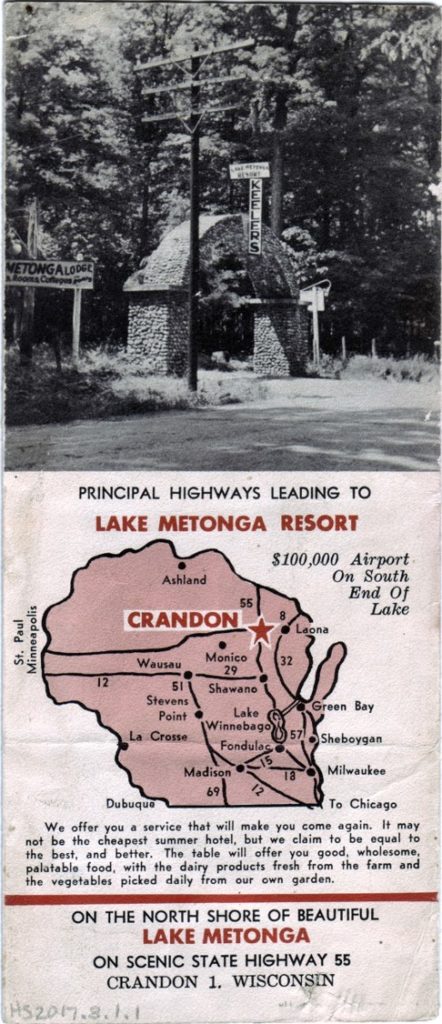
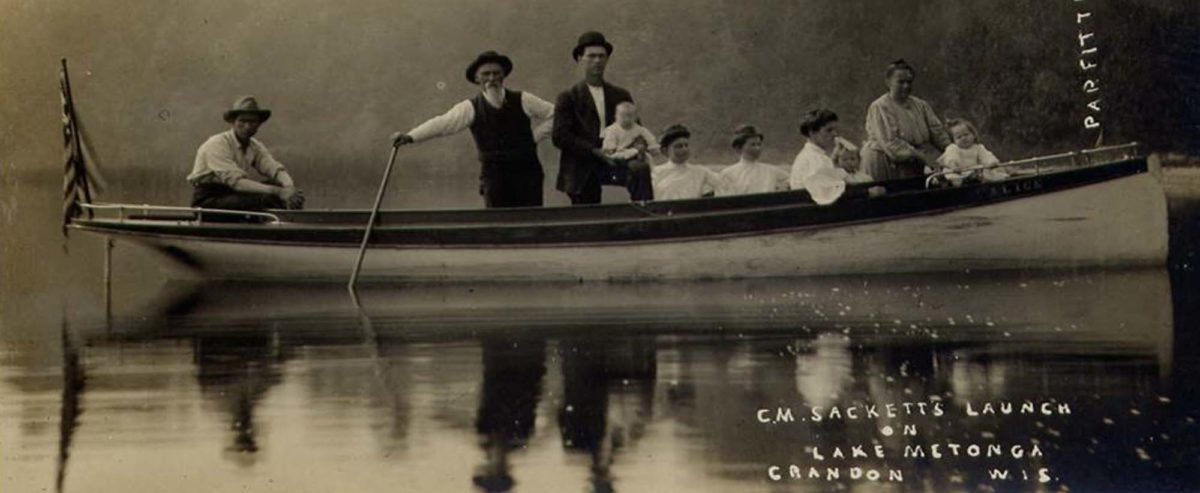
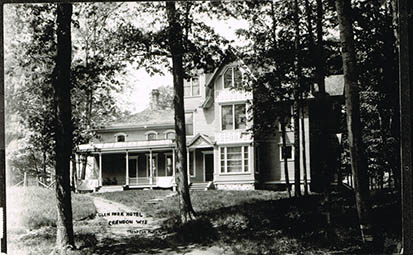
My father, the late Ben C. Kerr, (Crandon High School class of 1927), liked to tell his three children about growing up in the great northern city of Crandon. There was always plenty great fishing and hunting stories. He had a special picture album including his brother George, his mother, Anna and step-father Gus.